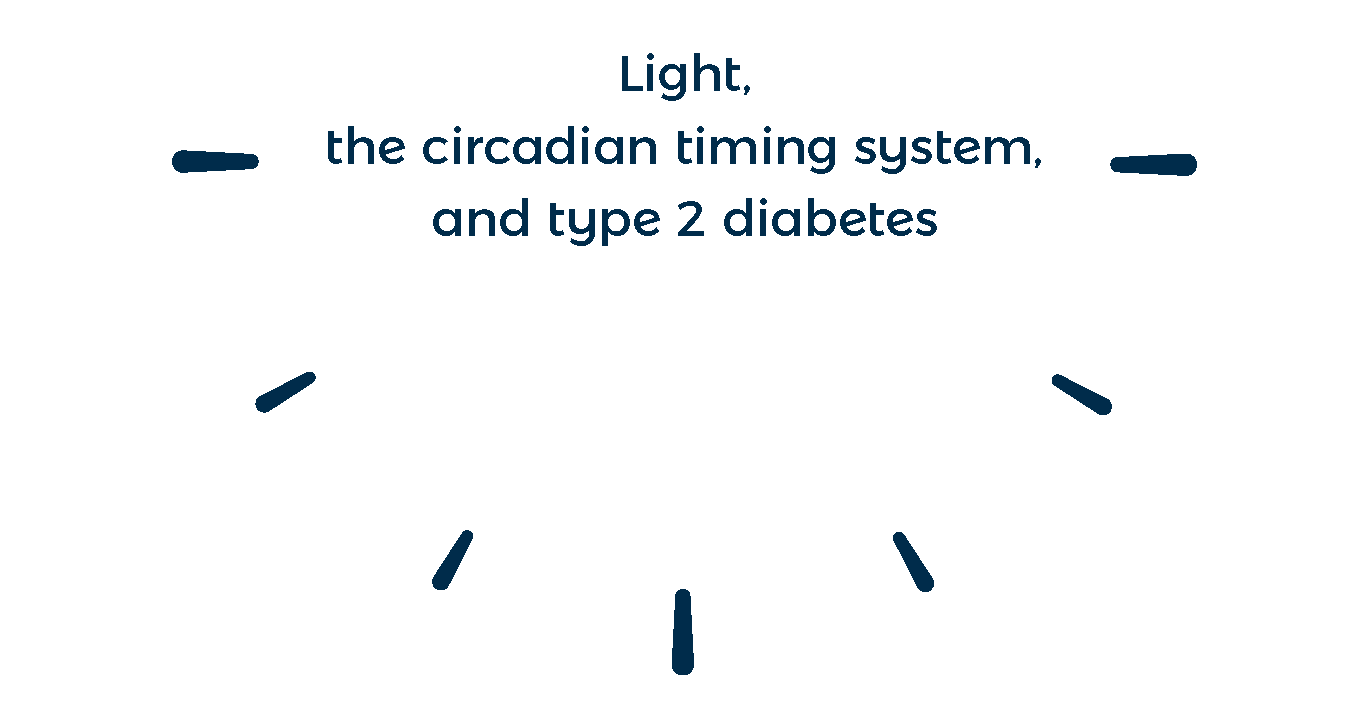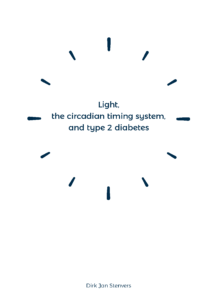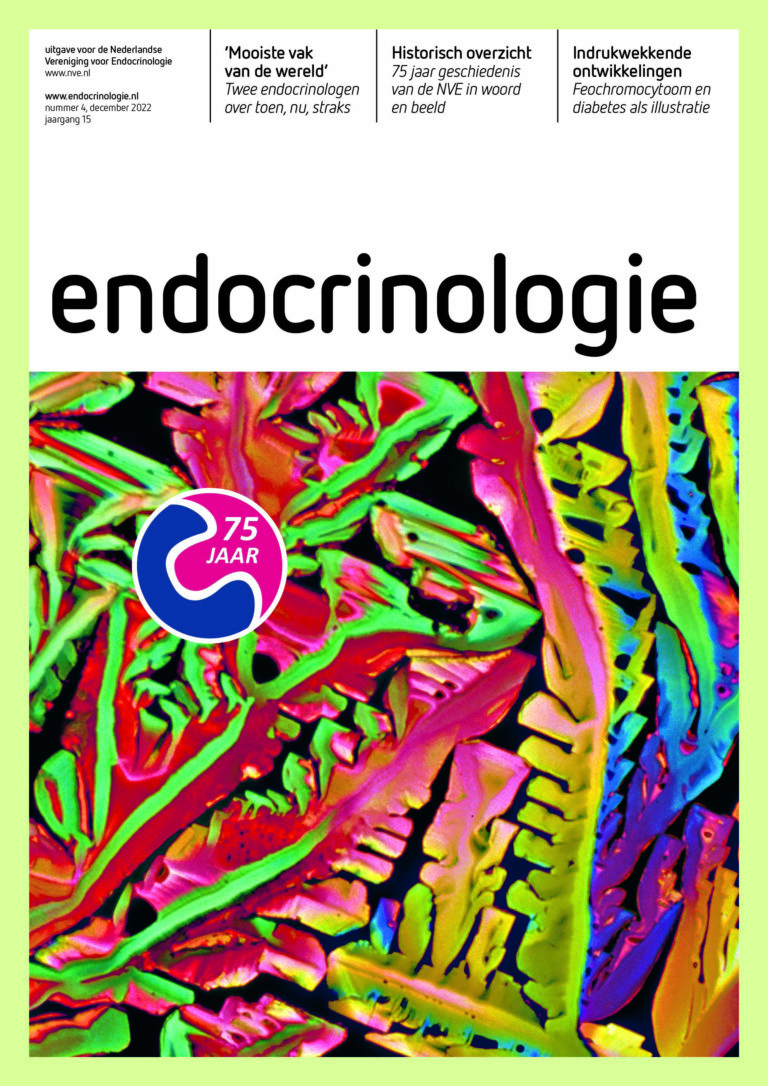Light, the circadian timing system, and type 2 diabetes
D.J. Stenvers



 Dirk Jan Stenvers – Universiteit van Amsterdam (2017)
Dirk Jan Stenvers – Universiteit van Amsterdam (2017)
Summary
Life evolved in conditions of a 24-hour rhythm of light and darkness, as dictated by the rotation of the earth. To prepare for the resulting behavioral rhythms of feeding/fasting and activity/sleep, mammals possess a circadian timing system, consisting of a central brain clock and peripheral clocks in tissues such as liver, pancreas and adipose tissue. The central clock in the brain is synchronized by environmental light. Nowadays, artificial light and fridges enable people to turn on the light, consume food, and perform activities at any time they desire. For this thesis, we hypothesized that the resulting desynchrony between the clocks in the circadian timing system and the rhythms of feeding/fasting, activity/sleep, and light/darkness, contributes to the pathophysiology of type 2 diabetes.
In a rat study, dim light at night caused major disturbances of sleep-wake behavior, feeding rhythms and metabolic rhythms. In healthy humans and patients with type 2 diabetes, bright ambient light directly influenced plasma glucose and lipid levels. In a subsequent study, patients with type 2 diabetes showed reduced daily rhythms of glucose metabolism and adipose tissue gene expression compared to healthy subjects. In a randomized clinical trial, a breakfast intervention (based on the observed reduced morning glucose tolerance) in patients with type 2 diabetes, reduced morning postprandial glucose levels without effect on long-term glycemic control. Together, our data provide support for the desynchrony-hypothesis.



